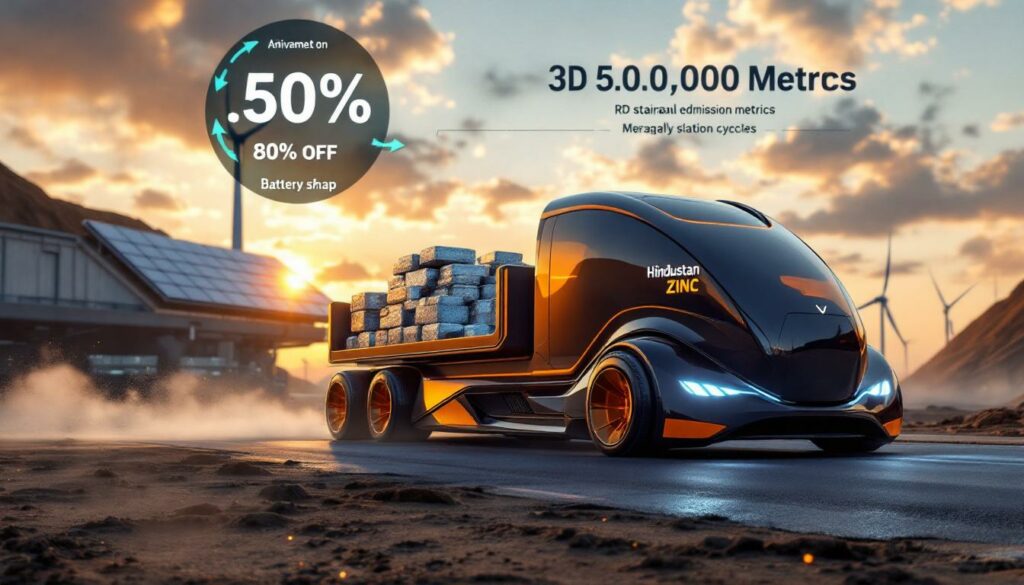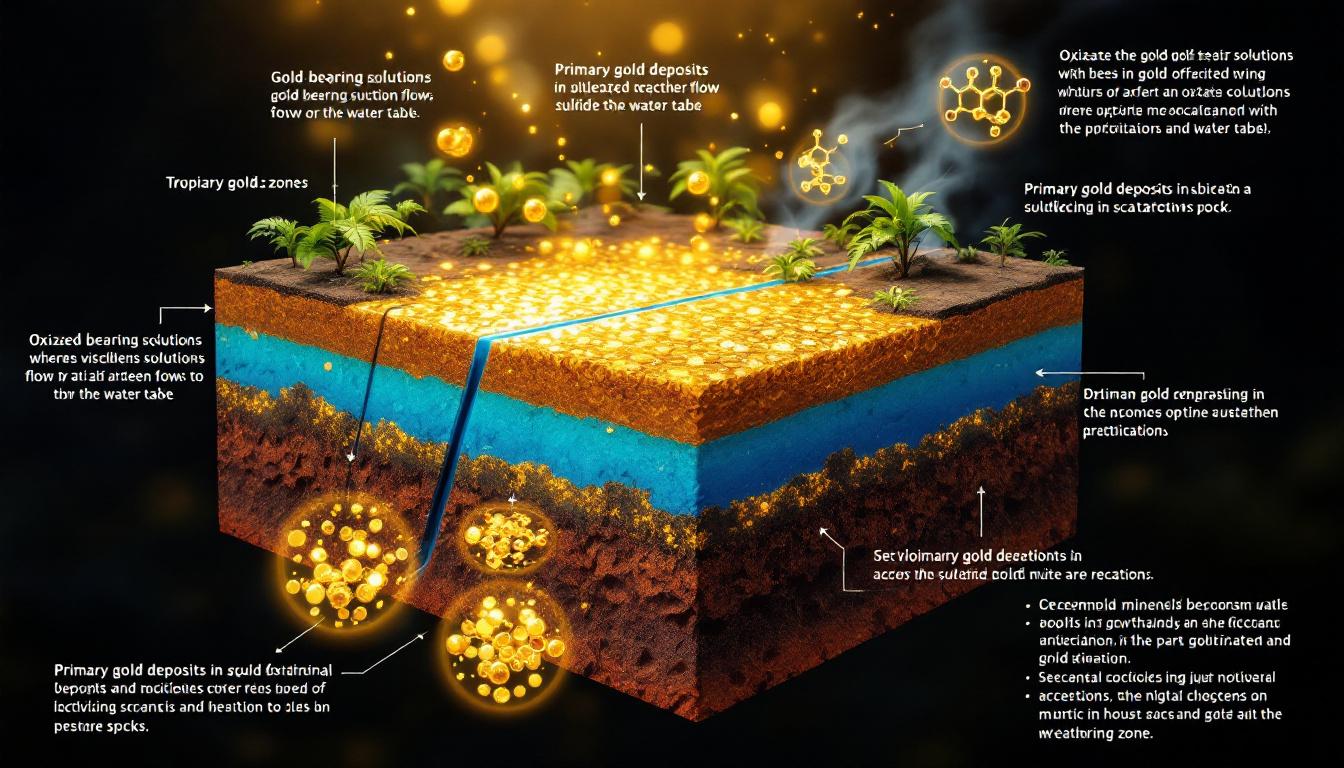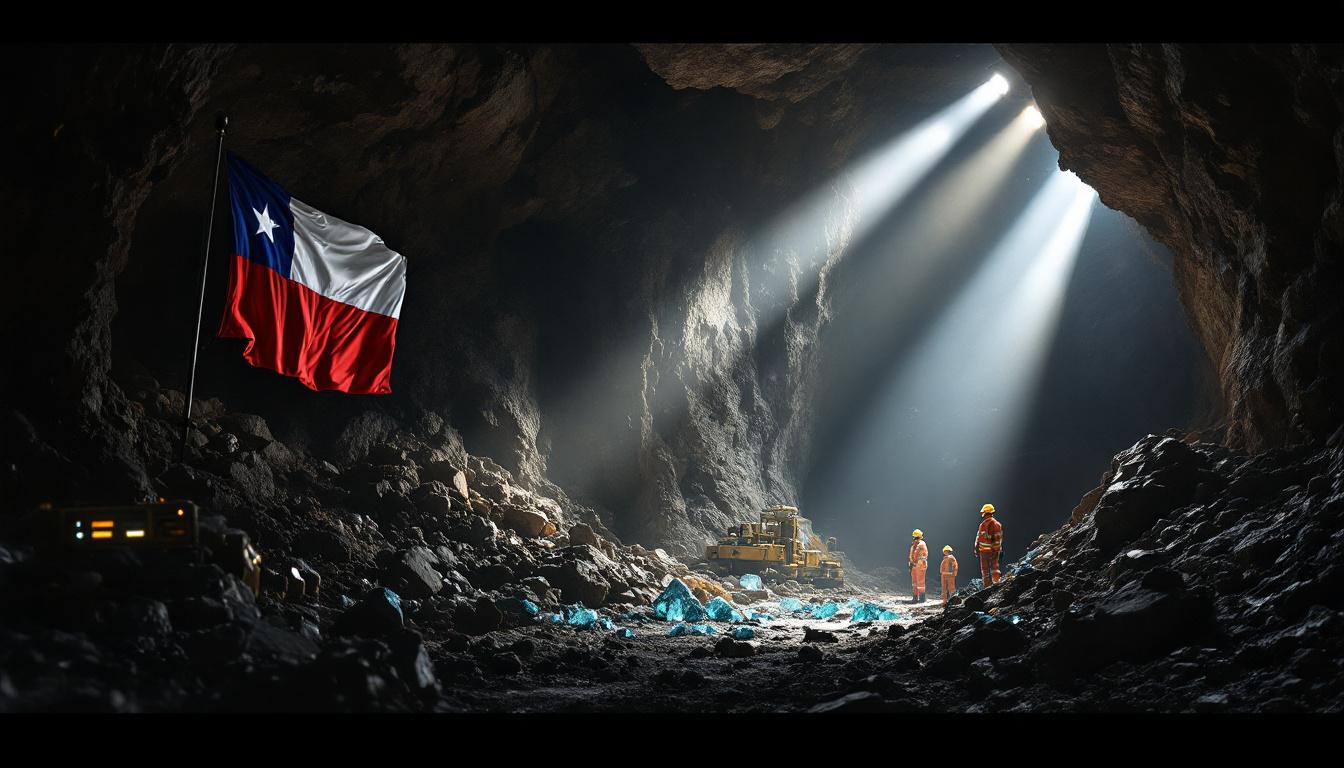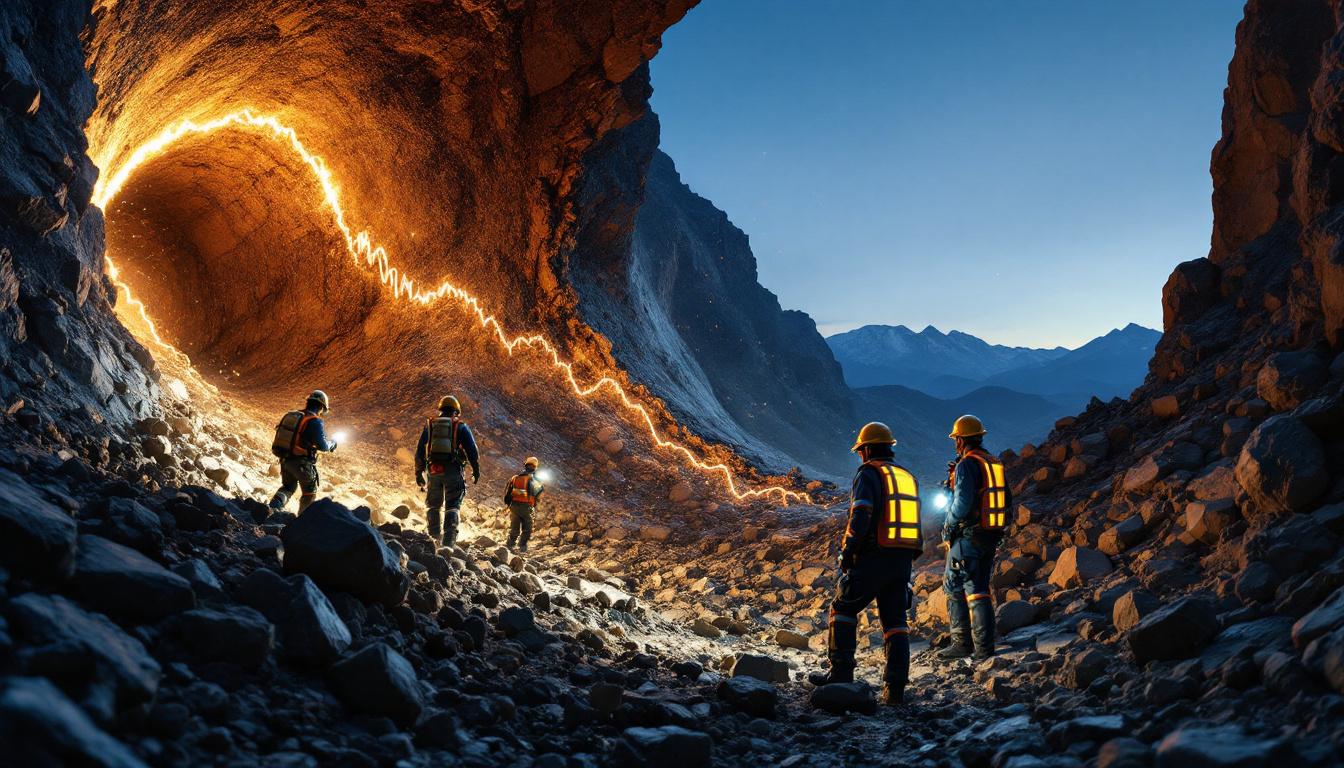GreenLine's $46 Million Electric Fleet Investment for Hindustan Zinc: Transforming Mining Logistics
GreenLine Mobility Solutions, an Indian sustainable logistics company, recently announced a transformative ₹4 billion ($45.7 million) investment to expand its electric truck fleet serving Hindustan Zinc. This strategic initiative marks a significant step toward replacing conventional diesel vehicles with zero-emission alternatives in India's mining sector, creating a blueprint for sustainable logistics in heavy industry.
The partnership aims to revolutionize material transport between Hindustan Zinc's operational sites while supporting the mining giant's long-term environmental objectives. As the mining industry faces increasing pressure to reduce its carbon footprint, this collaboration represents one of India's most substantial investments in mine electrification trends to date.
The Scale and Scope of the Investment
The ₹4 billion ($45.7 million) investment by GreenLine represents a substantial commitment to transforming mining logistics in India. This capital will primarily fund the expansion of GreenLine's electric truck fleet specifically designed for the demanding requirements of mining operations.
These specialized electric vehicles will be deployed for transporting materials between Hindustan Zinc's mines and smelters, replacing traditional diesel trucks that have dominated mining logistics for decades. The implementation is scheduled to commence in 2025, with a phased approach to ensure operational continuity.
Unlike conventional commercial electric vehicles, these trucks require specialized engineering to handle the unique demands of mining environments, including heavy loads, challenging terrain, and continuous operation cycles. The investment acknowledges these requirements with purpose-built vehicles designed specifically for mining applications.
Strategic Implementation Timeline
The deployment strategy involves a carefully planned rollout beginning in 2025, with initial implementations at Hindustan Zinc's highest-volume transport routes. This approach allows for:
- Gradual integration with existing logistics systems
- Real-time performance assessment and optimization
- Workforce training and adaptation
- Incremental infrastructure development to support expanding operations
Industry analysts note this phased approach represents best practices for industrial electrification, allowing for technological refinements while maintaining operational reliability during the transition period.
Supporting Hindustan Zinc's Sustainability Goals
This partnership directly supports Hindustan Zinc's ambitious environmental agenda, which includes a corporate commitment to achieve net-zero carbon emissions by 2050. As one of India's largest mining operations, the company's sustainability initiatives have significant implications for the nation's industrial emissions profile.
Logistics operations represent a substantial portion of mining's carbon footprint, with diesel-powered transportation contributing significantly to Scope 1 and Scope 3 emissions. By electrifying this critical operational component, Hindustan Zinc addresses one of the most challenging aspects of sustainable mining transformation.
Environmental Impact Assessment
The environmental benefits of this transition extend beyond carbon reduction:
- Reduced diesel consumption: Each electric truck can eliminate approximately 35-40 tons of diesel fuel annually
- Lower particulate emissions: Immediate improvement in air quality around operational sites
- Decreased noise pollution: Electric vehicles operate at significantly lower noise levels, improving working conditions
- Elimination of localized exhaust emissions: Enhanced air quality in confined mining areas where diesel exhaust poses health risks
"Electrification of mining transport represents one of the most effective strategies for immediate emissions reduction in the sector. The heavy-duty cycles and predictable routes make mining logistics an ideal candidate for early electrification." — Mining Sustainability Quarterly, 2025
The project aligns with India's broader climate commitments while demonstrating the technical and economic viability of heavy industry decarbonization in developing economies.
Technology Infrastructure Supporting the Electric Fleet
The investment extends significantly beyond vehicle acquisition to include comprehensive charging and power management systems essential for reliable operations in demanding mining environments.
Battery-Swapping Infrastructure Development
A central component of the investment involves establishing commercial-scale battery exchange stations at strategic operational points. This approach offers several advantages over traditional charging:
- Minimized downtime: Battery swapping takes minutes rather than hours required for charging
- Optimized battery lifecycle management: Centralized monitoring of battery health and performance
- Reduced vehicle weight: Batteries can be optimized for specific route requirements rather than maximum range
- Scalability: Additional capacity can be added to the system without modifying vehicles
The battery-swapping model has proven particularly effective in commercial applications with predictable routes and operational bases, making it ideally suited for mining operations where vehicles typically return to central locations multiple times daily.
Complementary LNG Fleet Expansion
Recognizing the limitations of current electric vehicle technology for certain applications, the investment also includes doubling Hindustan Zinc's liquefied natural gas (LNG) powered truck fleet to 200 vehicles focused on long-haul finished goods transport.
This dual approach offers several strategic advantages:
- Comprehensive emissions reduction: Immediate carbon reduction across all transport operations
- Operational flexibility: Matching vehicle technology to specific operational requirements
- Transitional pathway: Creating a phased approach to complete decarbonization
- Risk management: Maintaining operational resilience through technology diversification
The LNG fleet expansion represents a pragmatic intermediate step for routes and applications where full electrification remains challenging with current technology limitations.
Building on GreenLine's Previous Commitments
This latest investment builds upon GreenLine's established track record in sustainable logistics, demonstrating an escalating commitment to decarbonizing India's heavy transport sector.
Previous GreenLine Initiatives
In April 2025, GreenLine pledged $275 million specifically for heavy truck decarbonization initiatives across multiple industrial sectors. This broader market approach has now evolved into more targeted industry partnerships, with mining representing a strategic focus due to its:
- Predictable operational patterns
- Centralized infrastructure
- High utilization rates
- Significant emissions reduction potential
The progression from general market development to specialized mining solutions represents a natural evolution in GreenLine's strategic approach to sustainable logistics, focusing resources where they can deliver maximum environmental and economic impact.
Strategic Evolution
GreenLine's approach has evolved from providing generalized sustainable transport solutions to developing customized systems for specific industrial applications. This mining-focused investment represents:
- Industry-specific optimization: Vehicles and infrastructure tailored to mining requirements
- Integrated systems approach: Coordinating vehicles, energy systems, and operational workflows
- Long-term partnership model: Aligning with client sustainability roadmaps rather than transactional vehicle supply
- Vertical specialization: Developing deep expertise in mining logistics requirements
This strategic evolution positions GreenLine as a specialized partner in industrial sustainability rather than simply a vehicle supplier, creating more comprehensive and effective decarbonization solutions.
Economic Benefits of Electric Mining Logistics
The transition to electric vehicles offers compelling economic advantages beyond environmental benefits, creating a strong business case for both GreenLine and Hindustan Zinc.
Operational Cost Advantages
Electric vehicles deliver several financial benefits in mining applications:
- Reduced energy costs: Electric drivetrains typically operate at 20-30% the energy cost of diesel equivalents
- Lower maintenance requirements: Electric vehicles have fewer moving parts and no internal combustion systems to maintain
- Extended vehicle lifespan: Electric drivetrains commonly outlast diesel counterparts by 30-50%
- Decreased downtime: Predictive maintenance and fewer mechanical failures improve operational reliability
These operational advantages translate into meaningful cost reductions, particularly in the maintenance-intensive mining sector where vehicle reliability directly impacts production efficiency.
Long-Term Financial Implications
Beyond immediate operational savings, the investment offers strategic financial benefits:
- Protection against fuel price volatility: Electricity costs typically fluctuate less dramatically than diesel prices
- Carbon compliance positioning: Proactive emissions reduction ahead of potential regulatory requirements
- Enhanced ESG metrics: Improved sustainability performance affecting financing costs and investor relations
- Depreciation advantages: Potentially favorable treatment of sustainable infrastructure investments
Disclaimer: This analysis represents a general assessment of potential economic benefits. Actual financial outcomes will depend on specific operational factors, energy prices, and regulatory environments. Individual operations should conduct detailed financial analysis based on their specific circumstances.
Reflecting Broader Mining Industry Trends
The GreenLine-Hindustan Zinc partnership exemplifies accelerating trends toward sustainability throughout the global mining sector, particularly in emissions-intensive aspects of operations.
Emerging Industry Standards
Mining operations worldwide face increasing pressure to reduce environmental impacts while maintaining operational efficiency. This has led to several emerging standards:
- Science-based emissions targets: Major mining companies adopting verified reduction pathways
- Supply chain decarbonization initiatives: Extending environmental responsibility beyond direct operations
- Integrated ESG performance metrics: Sustainability measures increasingly linked to executive compensation
- Enhanced emissions disclosure requirements: Growing regulatory and investor demands for transparent reporting
These trends are reshaping industry practices, with electric mining transportation and equipment emerging as a critical pathway to meaningful emissions reduction.
Regional Leadership in Mining Sustainability
This initiative positions Hindustan Zinc among regional leaders in mining sustainability:
- Benchmark establishment: Setting performance standards for other Indian mining operations
- Technology demonstration: Proving the viability of electric mining logistics in developing economies
- Supply chain development: Catalyzing local capacity for sustainable mining technologies
- Regulatory influence: Informing potential policy frameworks through practical implementation experience
The scale and visibility of this project make it particularly significant for India's mining sector, potentially accelerating broader adoption of sustainable practices throughout the industry.
Implementation Challenges and Solutions
Despite the promising outlook, several significant hurdles must be addressed to ensure successful deployment and operation of the electric truck fleet in mining environments.
Technical Considerations
Mining presents unique challenges for electric vehicle deployment:
- Environmental extremes: Mining vehicles operate in dust, heat, and variable weather conditions that can affect battery performance
- Power infrastructure requirements: Remote mining locations may have limited existing electrical capacity
- Continuous operation demands: Mining typically operates 24/7, requiring robust charging or battery-swapping systems
- Heavy load requirements: Material transport involves substantial weights that impact range and battery performance
Addressing these challenges requires specialized engineering solutions rather than simply adapting commercial electric vehicles to mining applications.
Logistical Adaptations
Operational workflows must evolve to accommodate the different characteristics of electric vehicles:
- Route optimization: Adapting transport patterns to match vehicle range capabilities
- Charging/swapping integration: Incorporating battery management into operational schedules
- Maintenance training: Developing specialized skills for electric drivetrain maintenance
- Redundancy planning: Ensuring operational continuity during technology transition
These adaptations require coordinated planning across multiple operational departments to maintain productivity during the transition process.
Impact on India's Electric Vehicle Market
The scale of this investment positions the project as a potential catalyst for broader electric vehicle adoption in India's commercial transportation sector, particularly for heavy-duty applications.
Market Development Effects
Large-scale industrial adoption of electric vehicles creates several market development opportunities:
- Supply chain localization: Incentivizing domestic manufacturing of commercial EV components
- Specialized vehicle development: Encouraging innovation in purpose-built industrial electric vehicles
- Maintenance ecosystem growth: Creating demand for specialized technical services
- Infrastructure standardization: Establishing operational models for heavy-duty charging systems
These market effects extend beyond the immediate project, potentially accelerating the broader commercial EV ecosystem throughout India.
Policy Implications
Successful implementation could influence policy development in several ways:
- Evidence-based regulation: Providing real-world performance data to inform effective policies
- Incentive program design: Demonstrating which support mechanisms most effectively accelerate adoption
- Infrastructure planning: Identifying critical enablers for commercial fleet electrification
- Training programs: Highlighting workforce development needs for sustainable transportation
By demonstrating the practical viability of heavy-duty electric vehicles in demanding industrial applications, the project may significantly influence the regulatory approach to commercial vehicle electrification.
Opportunities for Mining Industry Suppliers
The shift toward electrified mining operations creates significant opportunities for equipment manufacturers and service providers throughout the mining supply chain.
Emerging Supplier Opportunities
As mining evolution 2025 continues, several market opportunities emerge:
- Specialized electric vehicle development: Purpose-built vehicles for specific mining applications
- Ruggedized charging systems: Infrastructure designed for harsh industrial environments
- Battery technologies: Storage solutions optimized for heavy-duty cycles and rapid exchange
- Fleet management systems: Software integrating vehicle performance, energy management, and operational planning
These opportunities represent substantial market potential as mining operations worldwide increasingly commit to decarbonization targets.
Adaptation Requirements
Suppliers must address several requirements to effectively serve this emerging market:
- Technical standards alignment: Ensuring compatibility with mining operational requirements
- Performance verification: Demonstrating reliability under demanding conditions
- Remote service capabilities: Supporting operations in challenging locations
- Specialized financing models: Addressing the different capital/operational cost profiles of electric vehicles
Suppliers who successfully address these requirements stand to benefit significantly from the mining industry's transition to electric mobility.
FAQs About GreenLine's Electric Fleet Investment
What is the timeline for deploying the electric truck fleet?
Implementation is expected to begin in early 2025, with initial deployments focusing on high-volume, shorter-distance routes between mines and processing facilities. The complete transition will follow a phased approach over approximately 24-36 months to ensure operational continuity.
How many diesel trucks will be replaced by this initiative?
While specific vehicle numbers haven't been disclosed, the scale of investment suggests a substantial fleet transformation. Based on typical electric heavy-duty truck costs, this likely represents 50-80 vehicles depending on specifications and supporting infrastructure allocation.
Will the electric trucks have the same hauling capacity as diesel models?
Modern electric heavy-duty trucks can match or exceed diesel counterparts in hauling capacity. Electric drivetrains typically offer superior torque characteristics particularly beneficial for mining operations with frequent stops and starts under load.
What happens to the replaced diesel vehicles?
The transition plan likely includes phased retirement of older diesel vehicles, with some potentially being repurposed for less intensive applications before eventual decommissioning. Responsible end-of-life management, including recycling of components, would align with the project's sustainability objectives.
How will extreme weather conditions affect the electric fleet performance?
Electric vehicles require specialized thermal management systems for optimal battery performance in extreme conditions. The implementation includes technological adaptations specifically addressing mining environmental factors, including:
- Battery thermal management systems
- Protected electrical components
- Ruggedized connections and interfaces
- Environmental sealing for dust and moisture protection
Disclaimer: This article contains forward-looking statements regarding technology performance, economic benefits, and market developments. Actual results may vary based on specific implementation details, technological developments, and market conditions. This content should not be considered investment advice or specific operational recommendations.
The Future of Sustainable Mining Logistics
The GreenLine-Hindustan Zinc partnership represents a significant step in the mining industry's sustainability journey. By addressing one of the most challenging aspects of mining emissions—heavy transport logistics—this initiative demonstrates practical pathways to meaningful decarbonization in heavy industry.
As implementation progresses, the project will provide valuable insights into the operational realities of industrial electrification, potentially accelerating adoption across India's mining sector and beyond. The combination of environmental benefits and operational advantages presents a compelling model for renewable energy mining transformation, particularly in developing economies balancing environmental goals with industrial growth.
For mining operators worldwide, this project offers a valuable case study in practical decarbonization strategies, demonstrating how strategic partnerships, phased implementation, and technology adaptation can create viable pathways to more sustainable operations.
Looking for the Next Major Resource Discovery?
Discover significant ASX mineral discoveries in real-time with Discovery Alert's proprietary Discovery IQ model, which transforms complex mining data into actionable investment insights. Visit the Discovery Alert discoveries page to explore how historic mineral discoveries have generated substantial market returns and begin your 30-day free trial today.




